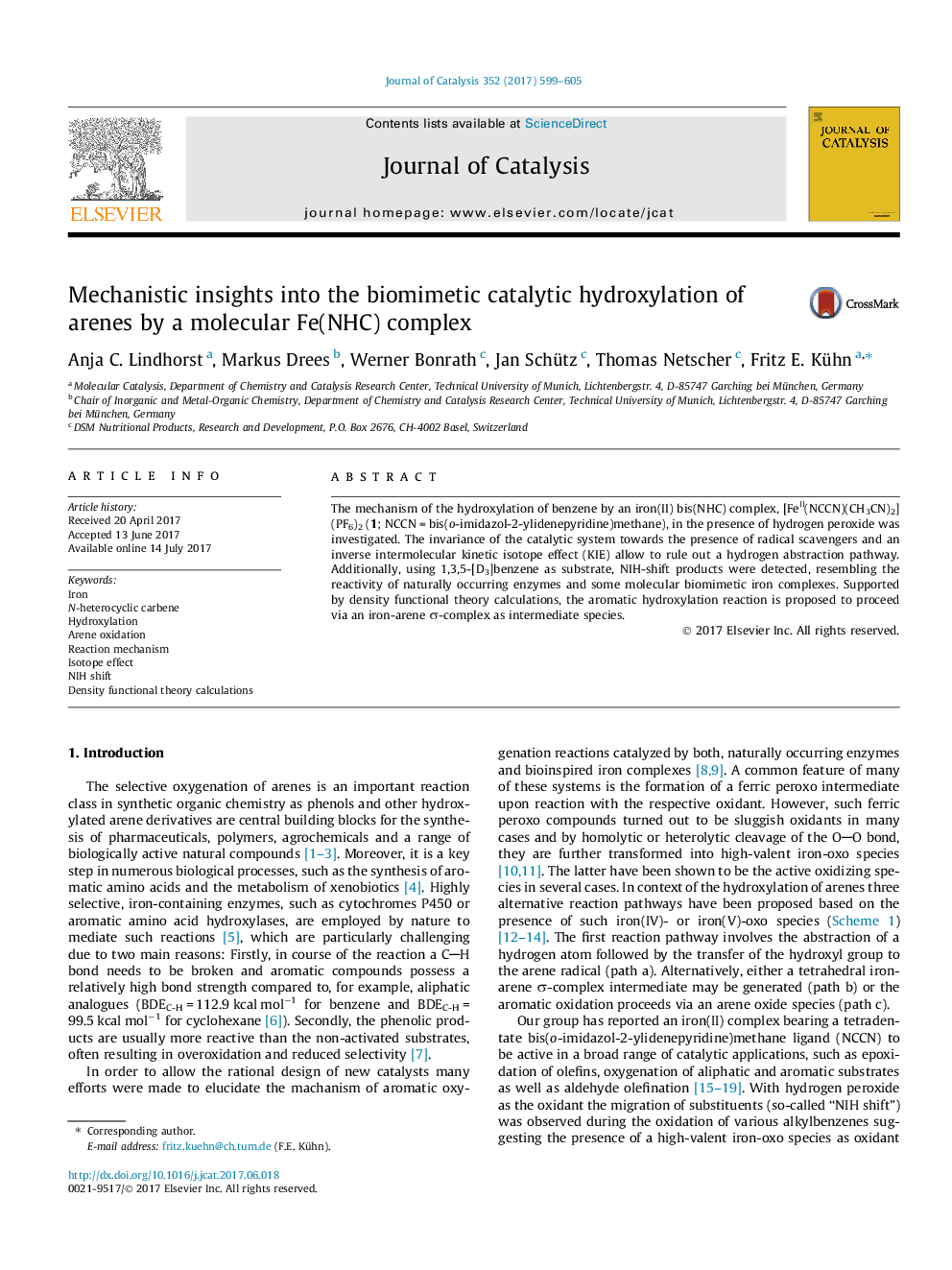| Article ID | Journal | Published Year | Pages | File Type |
|---|---|---|---|---|
| 6455464 | Journal of Catalysis | 2017 | 7 Pages |
â¢Reaction mechanism of benzene oxidation by an iron-NHC complex is investigated.â¢Catalytic probe reactions and density functional theory calculations are performed.â¢An iron-arene Ï-complex is proposed as intermediate species.â¢Observed NIH shifts resemble reactivity of enzymes and biomimetic iron complexes.
The mechanism of the hydroxylation of benzene by an iron(II) bis(NHC) complex, [FeII(NCCN)(CH3CN)2](PF6)2 (1; NCCNÂ =Â bis(o-imidazol-2-ylidenepyridine)methane), in the presence of hydrogen peroxide was investigated. The invariance of the catalytic system towards the presence of radical scavengers and an inverse intermolecular kinetic isotope effect (KIE) allow to rule out a hydrogen abstraction pathway. Additionally, using 1,3,5-[D3]benzene as substrate, NIH-shift products were detected, resembling the reactivity of naturally occurring enzymes and some molecular biomimetic iron complexes. Supported by density functional theory calculations, the aromatic hydroxylation reaction is proposed to proceed via an iron-arene Ï-complex as intermediate species.
Graphical abstractDownload high-res image (79KB)Download full-size image
